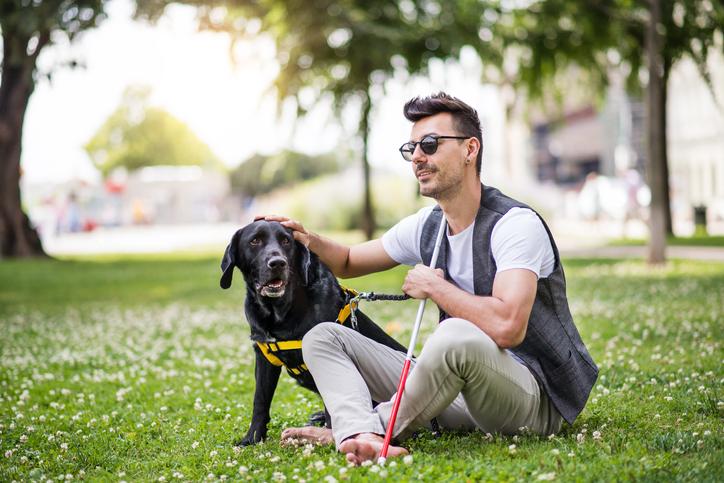
‘Please do not say handicapped.’ Lessons from the front
The Accessible Design and Innovation Inclusion Project makes information easier to access for people with disabilities.
In the effort to reach underserved communities during the pandemic, a group at UW Medicine is behind the scenes, making information easier to access.
Staff at The Accessible Design and Innovation Inclusion Project are experts at making information accessible and culturally appropriate to people with limited English, developmental disabilities, different learning styles, and limited vision and hearing.
Not only is this group a great resource for reaching these communities, it is a great resource for creating respectful, tailored communications to the underserved.
“We provide people with lived experiences (of disabilities) to offer real practical advice,” said Eva de Leon, director of the group, which is in the Department of Rehabilitation Medicine at the UW School of Medicine.
Last December, they received funding from King County to provide 100 hours of consultations on delivering COVID-19 information. They targeted 20 nonprofits and cold-called them to offer them free services. They leveraged staff expertise in making brochures, pamphlets, websites, social media, and videos accessible to people with disabilities. They partnered with the Northwest ADA (Americans with Disabilities Act) Center as well as individuals with disabilities.
This includes providing information that is culturally sensitive and uses proper language.
“Please do not say handicapped,” said de Leon. “It’s a person with a disability.”
The group is now working with a similar grant from the state Department of Health to help reach underserved communities about COVID-19 vaccinations.
Most of their work, however, is fee-for-service. The group works routinely with organizations throughout Washington, Oregon, Alaska and Idaho to develop strategies to employ and provide reasonable accommodations for people with disabilities. They provide company trainings about how to embrace employees with disabilities through education and etiquette; they also help people with disabilities succeed on the job.
De Leon offered guidance for communicating with and about people with disabilities:
- Emphasize abilities, not limitations. For example, say “person who uses a wheelchair” rather than “wheelchair-bound.” Say “person who uses a communication device” rather than “nonverbal.”
- In general, refer to the person first and the disability second. For example, say “man with paraplegia” and not “paraplegic.” Or “person of short stature” or “little person,” not “dwarf” or “midget.” Say “student receiving special education services,” not “special education student.”
- Do not use language that portrays the person as passive or lacking: For example, say “person who had a stroke,” not “stroke victim.” Or say “person with a brain injury,” not “brain damaged.” Say “burn survivor,” not “burn victim.”
- Use language that emphasizes the need for accessibility rather than the presence of a disability. For example, say “accessible parking,” not “handicapped parking.” Say “accessible restroom,” not “handicapped restroom.”
- Don’t use language that perpetuates stereotypes about psychiatric disabilities. Say “died by suicide,” not “committed suicide,” as this phrase suggests an almost criminal intent. “Died by suicide,” removes culpability from the person who has lost their life and allows a discussion about the disease or disorder from which they were suffering.Say “person with a substance-user disorder,” not “addict” or “junkie.” Say a “diagnosis of bipolar disorder” or “living with bipolar disorder” or “mental health condition,” not “bipolar” or “manic depressive.” Use “person with schizophrenia,” not “schizophrenic.”
- Do not portray a person with a disability as heroic or inspiring because they are simply living their lives. Stereotypes may raise false expectations that everyone with a disability is, or should be, an inspiration.
- When talking with a person with a disability, be patient. People with disabilities and older adults might require more time to express themselves.
- Offer assistance and listen to the response; follow any specific instructions. If the response is “no thank you,” respect that statement.
- Speak directly to the person and maintain eye contact. Do not speak to a companion, aide, or interpreter.
- Have a pad of paper handy in case a person is deaf or unable to speak.
For more information, see tips on writing about people with disabilities and on business etiquette for people with disabilities.
– Bobbi Nodell - bnodell@uw.edu, 206.543.7129
For details about UW Medicine, please visit https://uwmedicine.org/about.
Tags:disability